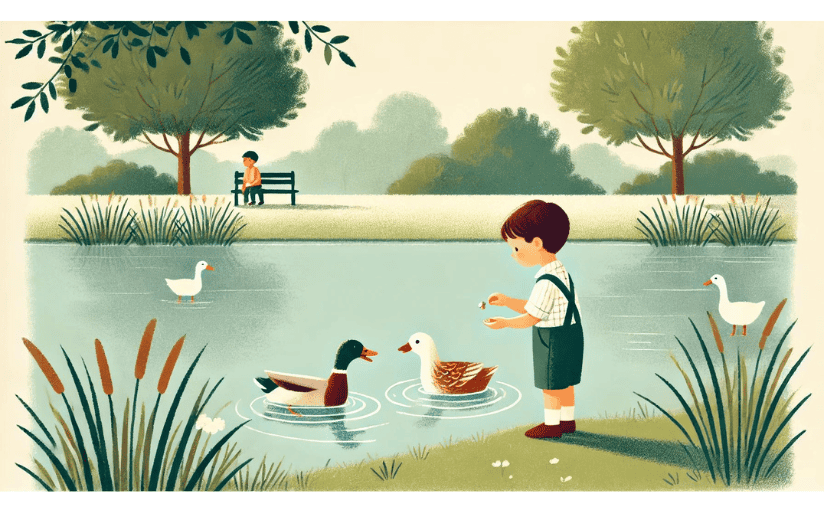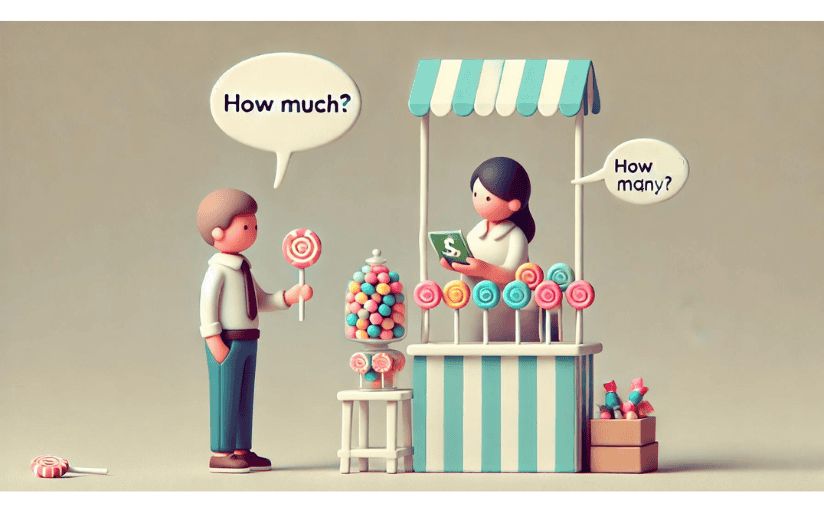I’d love to give you some tips about how and when to properly use quantifiers. What are quantifiers, you ask? Why, they are the words that answer the age-old questions of, “How much?” and, “How many?” Preceding and modifying nouns, quantifiers can be useful in writing. But writers beware, they can also be filler that cheapen your work.

A Few Examples of Quantifiers
There are two basic types of quantifiers: those that count, and those that apply to nouns that cannot be counted.
Count examples:
– He fed a few ducks in the pond.
– She saw many airplanes in the sky.
– A couple of the trains were uncoupled.
– Several people got lost on the unmarked trail.
Other common count quantifiers include, every, each, few, either, neither, great many and a number of.
Non-count examples:
– There was a great deal of laughing coming from the theater.
– She was in the mood for a little ice cream.
– There would be no dancing that night.
– Not much sleeping happens in a home with little children.
Other common non-count quantifiers include plenty of, a little, less, more, much, a bit of, any and some.
Working with both types of quantifiers:
– All of the ducks were hungry./All of the laughter was loud.
– Some airplanes were blue./Some ice cream was melted.
– Most of the trains were old./Most of the dancing was sloppy.
– Plenty of people found their way home./Plenty of sleeping happens at naptime.
Other common quantifiers that work with both include a lot of, lots of, enough, much, a bit of, any and some.
The Little Word Factor
One little word can change the entire meaning of a quantifier. Take “little” and “a little” and “few” and “a few,” for example. Adding that little “a” will actually create the opposite idea in writing:
– Kate has a little experience writing about grammar. (Kate sort of knows her stuff.)
– Kate has little experience writing about grammar. (Don’t listen to Kate.)
or
– Kate owns a few books about grammar rules. (Kate has references to use.)
– Kate owns few books about grammar rules. (Kate basically just makes it up.)
“A” isn’t the only little word that matters when it comes to quantifiers. For example, the word “much” should always be combined with the word “of” unless it is used in a question or as a negative:
– Much of the rain fell between 1 and 2 p.m. (NOT “Much rain fell between 1 and 2 p.m.)
– How much rain fell after 2 p.m.?
– Not much rain fell after 2 p.m.
And lastly, check out what “the” will do for the quantifier “most of.” No matter if it is quantifying a count or non-count noun, you always need to tack a “the” onto “most of” unless you are talking about a general plural noun, in which case you can drop “of the” and just hang on to “most”:
– Most of the blue trains were named “Thomas.”
– Most parents will understand that reference.
– Most of the parents in the room with the TV on are watching the show now.
– Most children probably know the show’s theme song by heart.

Avoid the Filler That Can Come With Quantifiers
When content writers start writing phrases such as “a great deal of” or “plenty of,” they should backspace and rethink it. Those terms tend to be fluff and simply water down the writing.
Additionally, some quantifiers, specifically “lots of,” are informal and looked down on in academic writing. Choose stronger quantifiers, such as “many.” Better yet, find a statistic that will give you a hard number instead of using a general quantifier.
Understand Most of This?
Now that you have had your crash course on quantifiers, search your writing to use them correctly – or, in some cases, not at all. Have a question for us? Leave it in the comments!


Leave a Reply